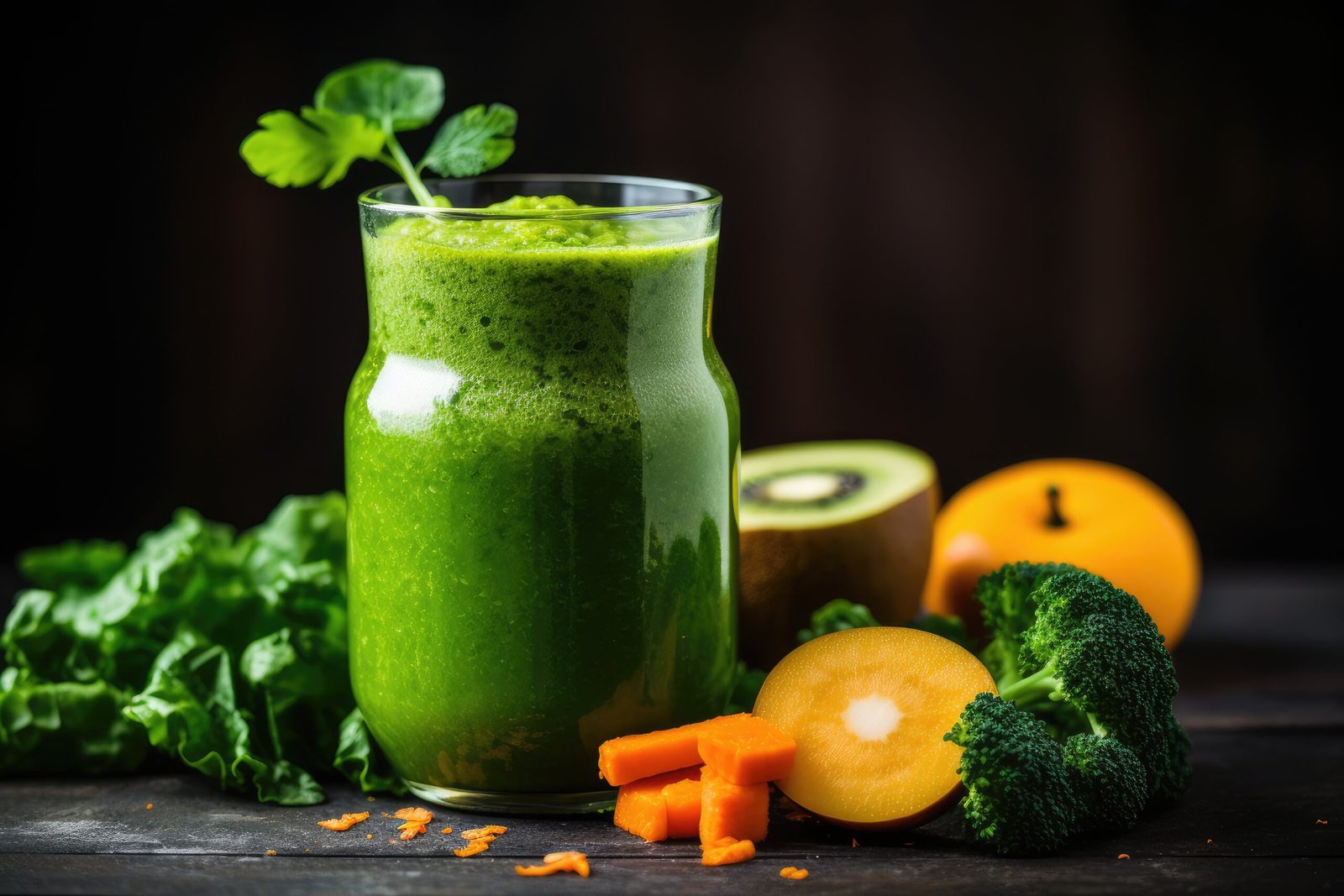Navigating Menopause: Tips for a Healthier Transition
Imagine waking up one day and feeling like your body has suddenly decided to go rogue. Hot flashes strike out of nowhere, your mood swings faster than a rollercoaster, and you’re wondering if you’ve somehow time-traveled to a different version of yourself. Welcome to menopause, ladies! It’s like puberty’s older, slightly crankier cousin. But don’t worry, I’ve been there, done that, and got the night-sweat-soaked t-shirt to prove it. Let me tell you, it’s not always a smooth ride, but with the right tips and tricks, you can navigate this wild hormonal adventure like a boss. So, grab a fan (trust me, you might need it), and let’s dive into how to make this transition a bit easier and a whole lot healthier!

Understanding the Menopause Rollercoaster
Okay, so what exactly is menopause? It’s not just one day where your body decides to throw in the towel on making babies. Nope, it’s a whole journey that can last for years. Basically, it’s when your ovaries start to slow down on producing eggs and hormones like estrogen and progesterone. This usually happens between ages 45 and 55, but everyone’s different. You’re officially in menopause when you haven’t had a period for 12 months straight.
Now, here’s the fun part (and by fun, I mean challenging): your body goes through a lot of changes during this time. It’s like puberty in reverse, with a whole new set of symptoms to deal with. Hot flashes, night sweats, mood swings, weight gain, and changes in your skin and hair are just a few of the surprises menopause might throw your way. But don’t freak out! Understanding what’s happening in your body is the first step to dealing with it. Knowledge is power, ladies!

Embrace the Power of Exercise
I know, I know. When you’re feeling bloated, cranky, and like you might spontaneously combust at any moment, exercise is probably the last thing on your mind. But trust me on this one – moving your body can work wonders during menopause. It’s like a magical elixir for so many of those annoying symptoms.
Regular exercise can help with weight management (hello, menopause belly), mood swings, and even those pesky hot flashes. Plus, it’s great for keeping your bones strong, which is super important as we age. You don’t have to run a marathon or become a gym rat. Start small – maybe a brisk walk around the block, a dance party in your living room, or some gentle yoga. The key is to find something you enjoy, so it doesn’t feel like a chore. I personally discovered a love for swimming during my menopause journey. It kept me cool and was easy on my joints. Win-win!

Fuel Your Body Right
During menopause, your body might start acting like a picky toddler – rejecting foods it used to love and craving weird stuff. It’s all part of the hormonal circus. But eating right can make a huge difference in how you feel. Think of food as your ally in this transition, not your enemy.
Focus on nutrient-dense foods that’ll give your body what it needs. Fruits, veggies, whole grains, and lean proteins are your best friends. These foods can help stabilize your mood, give you energy, and even help with those annoying hot flashes. And don’t forget about calcium and vitamin D for your bones! I started eating more leafy greens and salmon, and I swear it helped with my energy levels. Oh, and pro tip: try to cut back on caffeine, alcohol, and spicy foods – they can trigger hot flashes and mess with your sleep. I know, I know, giving up that morning coffee might seem impossible, but your body will thank you!

Stay Hydrated, My Friends
Okay, let’s talk about water. I know it’s not the most exciting topic, but trust me, staying hydrated during menopause is super important. It’s like your body’s personal cooling system, and during menopause, that system is working overtime!
Drinking plenty of water can help with a bunch of menopause symptoms. It can help reduce bloating, ease hot flashes, and even help with that dry skin that seems to come out of nowhere. Plus, it’s great for your overall health. I started carrying a water bottle everywhere I went, and it made a big difference. And hey, if plain water gets boring, try adding some fresh fruit or herbs for a natural flavor boost. Cucumber and mint water became my go-to refresher during hot flashes!

Prioritize Your Sleep
Let’s be real – getting a good night’s sleep during menopause can feel like trying to nap in the middle of a rock concert. Between night sweats, insomnia, and having to pee every five minutes, quality sleep can be hard to come by. But it’s so, so important for your health and sanity.
Try to create a sleep routine that works for you. Maybe that means going to bed and waking up at the same time every day, even on weekends. Keep your bedroom cool and dark – I invested in some light-blocking curtains and a fan, and it was a game-changer. Avoid screens before bedtime (I know, easier said than done), and try some relaxation techniques like deep breathing or gentle stretching. And if you’re dealing with night sweats, keep a change of clothes and a towel nearby. It’s not fun, but being prepared can help you get back to sleep faster.

Stress Less (Easier Said Than Done, Right?)
Stress and menopause go together like peanut butter and jelly – except way less tasty. The hormonal changes can make you more sensitive to stress, and let’s face it, life doesn’t stop just because you’re going through menopause. But managing your stress is crucial for your overall well-being.
Find stress-busting activities that work for you. Maybe it’s meditation, deep breathing exercises, or just taking a few minutes each day to do something you enjoy. I got into adult coloring books – sounds silly, but it was so relaxing! Exercise can also be a great stress-reliever. And don’t be afraid to say no to things that overwhelm you. It’s okay to put yourself first sometimes. Remember, taking care of your mental health is just as important as taking care of your physical health during this transition.

Keep Your Mind Sharp
Sometimes menopause can make you feel like your brain is wrapped in cotton wool. Forgetfulness and difficulty concentrating are common complaints. But don’t worry, you’re not losing your mind – it’s just those pesky hormones messing with you again.
Keep your brain active and engaged. Try puzzles, crosswords, or learn a new skill. I started learning Spanish during my menopause journey – it was challenging but so rewarding! Reading regularly, staying socially active, and even playing brain-training games can all help keep your mind sharp. And remember, if you’re really struggling with memory issues or brain fog, don’t hesitate to talk to your doctor. There are treatments available that can help.

Nurture Your Relationships
Menopause can be a rollercoaster, not just for you, but for your relationships too. Mood swings, decreased libido, and just generally not feeling like yourself can put a strain on your connections with others. But strong relationships can also be an incredible source of support during this time.
Be open with your partner, family, and friends about what you’re going through. Educate them about menopause – chances are, they might not fully understand what you’re experiencing. Don’t be afraid to ask for help or support when you need it. And remember, it’s okay to set boundaries and take time for yourself when you need it. I found that regular “girl’s nights” with my friends who were also going through menopause were incredibly helpful. We could laugh, vent, and share tips in a way that our families, as supportive as they were, just couldn’t quite understand.

Explore Natural Remedies
While there are medical treatments available for menopause symptoms, some women prefer to try natural remedies first. And there are plenty of options out there! Just remember to always check with your doctor before trying any new supplements or treatments.
Some women find relief from hot flashes with herbs like black cohosh or evening primrose oil. Others swear by acupuncture for various menopause symptoms. I personally found that drinking chamomile tea before bed helped with my sleep issues. Essential oils like lavender and peppermint can be soothing for stress and headaches. And don’t underestimate the power of a cold pack on the back of your neck during a hot flash – it’s simple, but it can work wonders!

Keep Up with Regular Check-ups
During menopause, your health care needs change. It’s super important to keep up with regular check-ups and screenings. Your risk for certain health conditions, like osteoporosis and heart disease, increases after menopause, so staying on top of your health is crucial.
Make sure you’re getting regular mammograms, pap smears, and bone density scans as recommended by your doctor. Keep an eye on your blood pressure and cholesterol levels too. And don’t be shy about discussing any symptoms or concerns with your healthcare provider. They’ve heard it all before, trust me! I started keeping a symptom diary to track my hot flashes and mood changes, which was really helpful when talking to my doctor about treatment options.

Embrace Your Changing Body
Let’s be real – menopause can do a number on your body image. Weight gain, especially around the middle, is common. Your skin might get drier, your hair might thin, and don’t even get me started on the joys of chin hair (seriously, what’s up with that?). But here’s the thing – your body is amazing, and it’s carried you through so much in life.
Try to shift your focus from how your body looks to how it feels and what it can do. Celebrate your strength, your resilience, and all the experiences your body has been through. Treat yourself to clothes that make you feel good in your changing body. I started wearing more flowy, comfortable clothes and it made a big difference in how I felt about myself. And remember, every woman goes through this. You’re not alone, and you’re beautiful just as you are.

Look for the Silver Linings
Okay, I know menopause can feel like a total drag sometimes. But believe it or not, there are some upsides to this whole transition. For one, no more periods! Say goodbye to tampons, pads, and unexpected leaks. Plus, many women report feeling a new sense of freedom and confidence after menopause.
This can be a time of reinvention and self-discovery. Maybe you’ll find a new hobby, start a new career, or travel to places you’ve always wanted to see. I personally found that I cared less about what others thought and became more confident in speaking my mind. Menopause can be a doorway to a new chapter in your life – one where you’re wiser, more self-assured, and ready to take on new adventures.

Navigating menopause isn’t always easy, but with the right tools and mindset, you can make this transition smoother and even empowering. Remember, every woman’s experience with menopause is unique. What works for one person might not work for another, so don’t be afraid to experiment and find what works best for you. Be patient with yourself, listen to your body, and don’t hesitate to reach out for support when you need it.
At the end of the day, menopause is a natural part of life’s journey. It’s a transition, not an ending. Yes, it comes with challenges, but it also brings opportunities for growth, self-discovery, and a new kind of freedom. So embrace this new chapter, take care of yourself, and remember – you’ve got this, lady! You’re strong, you’re resilient, and you’re about to enter a pretty amazing phase of life. Hot flashes and all!



















0 Comments